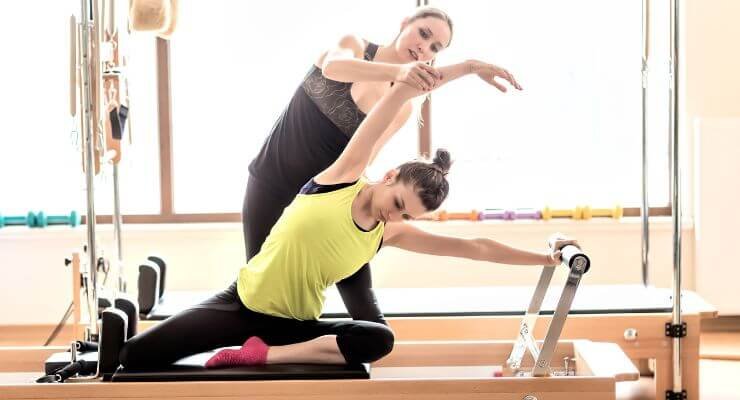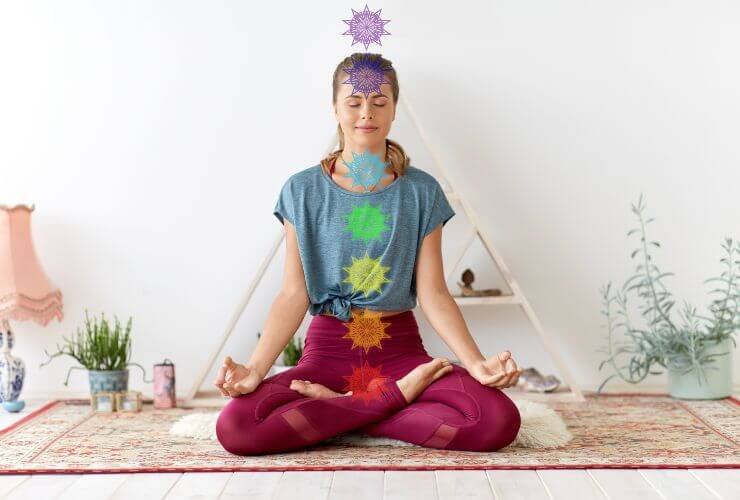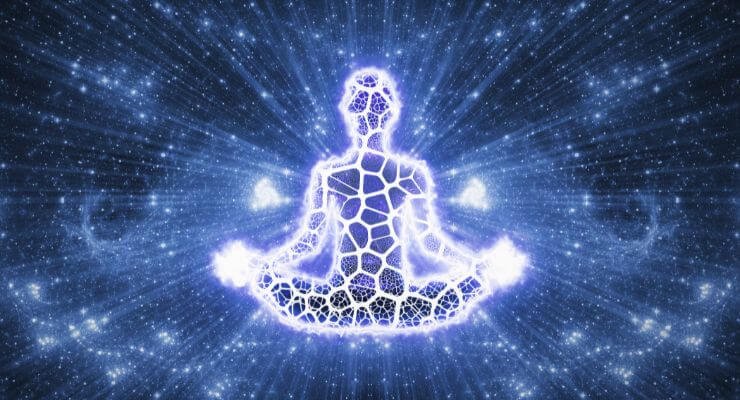Yoga and Pilates are two popular forms of exercise that are often confused with one another.
While both practices involve physical movement and focus on breath control, there are significant differences between the two.
Understanding these differences can help individuals choose the practice that best suits their needs and goals.
Yoga is an ancient practice that originated in India and has been around for thousands of years.
It is a holistic practice that combines physical movement with breath control, meditation, and spiritual teachings.
Yoga is known for its ability to promote relaxation, reduce stress, and improve overall health and well-being.
There are many different styles of yoga, each with its own unique approach and emphasis.
Pilates, on the other hand, is a more recent form of exercise that was developed in the early 20th century by Joseph Pilates.
It is a low-impact form of exercise that focuses on building core strength, improving flexibility, and developing better posture and balance.
Pilates exercises are typically done on a mat or with specialized equipment, such as a reformer or Cadillac.
While Pilates does involve some breath control, it is not as central to the practice as it is in yoga.
Origins of Yoga and Pilates
Historical Background of Yoga
Yoga is an ancient practice that originated in India around 5,000 years ago.
The word “yoga” comes from the Sanskrit word “yuj,” which means to unite or join.
The practice of yoga involves physical postures, breathing techniques, and meditation to promote physical, mental, and spiritual well-being.
The earliest written records of yoga are found in the Vedas, which are ancient Hindu scriptures.
Yoga was also mentioned in the Bhagavad Gita, a Hindu text that dates back to around 500 BCE.
Over time, yoga evolved into different styles and techniques, including Hatha yoga, Ashtanga yoga, and Kundalini yoga.
Historical Background of Pilates
Pilates is a relatively modern form of exercise that was developed by Joseph Pilates in the early 20th century.
Joseph Pilates was a German physical trainer who was interned in England during World War I.
During his internment, he developed a system of exercises that he called “Contrology,” which focused on strengthening the core muscles to improve posture, balance, and flexibility.
After the war, Joseph Pilates moved to the United States and opened a studio in New York City.
He began teaching his method to dancers and athletes, and it soon gained popularity among the general public.
Today, Pilates is practiced around the world and has evolved into different styles and techniques, including mat Pilates, Reformer Pilates, and Pilates with props.
Core Principles
Yoga Principles
Yoga is an ancient practice that focuses on the union of the mind, body, and spirit. The core principles of yoga include:
- Breath control (pranayama)
- Physical postures (asanas)
- Meditation (dhyana)
- Relaxation (savasana)
Breathing is an essential part of yoga, and practitioners are taught to control their breath to help them focus and relax.
Physical postures are used to stretch and strengthen the body, improve flexibility, and increase balance.
Meditation is used to calm the mind and bring a sense of peace and tranquility.
Finally, relaxation is used to help the body and mind recover from the physical and mental stress of daily life.
Pilates Principles
Pilates is a modern exercise system that focuses on strengthening the core muscles of the body.
The core principles of Pilates include:
- Concentration
- Control
- Centering
- Precision
- Breath
Concentration is essential in Pilates, and practitioners are taught to focus on every movement and every muscle.
Control is important to ensure that movements are performed correctly and safely.
Centering is the idea that all movements originate from the core muscles of the body.
Precision is necessary to ensure that movements are performed correctly and efficiently.
Finally, breath is used to help practitioners focus and to provide energy to the body during exercise.
Overall, while both yoga and Pilates have different core principles, they both focus on improving the mind-body connection and promoting overall health and wellness.
Methodology
Yoga Methodology
Yoga is a physical, mental, and spiritual practice that originated in ancient India.
The practice of yoga involves a series of physical postures, breathing exercises, and meditation techniques that are designed to promote physical and mental well-being.
The methodology of yoga is based on the principles of mindfulness and self-awareness.
Practitioners of yoga are encouraged to focus on their breath, body, and mind, and to cultivate a sense of inner peace and harmony.
Yoga classes typically begin with a period of relaxation and centering, followed by a series of physical postures or asanas.
The asanas are designed to stretch and strengthen the muscles, improve flexibility, and promote overall physical health.
In addition to the physical postures, yoga classes may also include breathing exercises, meditation techniques, and chanting.
Pilates Methodology
Pilates is a form of exercise that was developed by Joseph Pilates in the early 20th century.
The methodology of Pilates is based on the principles of control, precision, and flow.
Pilates exercises are designed to improve core strength, flexibility, and posture, while also promoting relaxation and stress reduction.
Pilates classes typically begin with a series of warm-up exercises, followed by a series of mat-based exercises that focus on core strength and stability.
Pilates exercises are performed slowly and with control, and are designed to engage the deep muscles of the body.
In addition to mat-based exercises, Pilates classes may also include the use of specialized equipment, such as the reformer or the Cadillac.
Overall, while both yoga and Pilates share some similarities in terms of methodology, they are distinct practices with different goals and approaches.
Yoga emphasizes mindfulness, self-awareness, and spiritual growth, while Pilates focuses on physical conditioning and core strength.
Benefits of Yoga vs Pilates
Yoga and Pilates are both great forms of exercise that offer numerous benefits.
Both practices can help improve flexibility, strength, and balance, as well as reduce stress and improve overall well-being.
However, there are some differences in the specific benefits that each practice offers.
Benefits of Yoga
Yoga is a holistic practice that combines physical postures, breathing techniques, and meditation to promote overall health and well-being.
Here are some of the benefits of practicing yoga:
- Improved Flexibility: Yoga poses are designed to stretch and strengthen the muscles, which can help improve flexibility and range of motion.
- Increased Strength: Many yoga poses require you to hold your body weight in various positions, which can help build strength in the muscles.
- Reduced Stress: The breathing techniques and meditation practices in yoga can help reduce stress and promote relaxation.
- Improved Sleep: Practicing yoga regularly can help improve the quality of your sleep and reduce insomnia.
- Reduced Anxiety and Depression: Yoga has been shown to be effective in reducing symptoms of anxiety and depression.
Benefits of Pilates
Pilates is a low-impact form of exercise that focuses on strengthening the core muscles and improving posture.
Here are some of the benefits of practicing Pilates:
- Improved Posture: Pilates exercises are designed to strengthen the muscles that support good posture, which can help improve your overall alignment.
- Increased Core Strength: Many Pilates exercises focus on strengthening the muscles of the core, which can help improve overall strength and stability.
- Reduced Risk of Injury: Pilates exercises are low-impact and focus on proper alignment, which can help reduce the risk of injury.
- Improved Flexibility: Pilates exercises can help improve flexibility and range of motion.
- Reduced Stress: The focus on breathing and mindfulness in Pilates can help reduce stress and promote relaxation.
Equipment Used in Yoga vs Pilates
Yoga Equipment
Yoga requires minimal equipment, and most of it is optional.
Here are some common yoga equipment:
- Yoga mat: A non-slip mat that provides cushioning and support for yoga poses.
- Yoga blocks: Blocks made of foam, cork, or wood, used to modify poses and provide support.
- Yoga straps: Straps made of cotton or nylon, used to deepen stretches and improve flexibility.
- Yoga blankets: Blankets used for cushioning, support, and warmth during relaxation poses.
Pilates Equipment
Pilates requires specialized equipment, which can be found in a Pilates studio or home gym.
Here are some common Pilates equipment:
- Reformer: A machine that consists of a sliding carriage, springs, and straps, used to perform a variety of Pilates exercises.
- Cadillac: A large piece of equipment that consists of a raised mat, a tower with springs and bars, and various attachments, used to perform a range of Pilates exercises.
- Chair: A compact piece of equipment that consists of a padded seat and a set of springs and bars, used to perform a variety of Pilates exercises.
- Barrel: A piece of equipment that consists of a curved surface, used to improve flexibility, posture, and balance.
While both yoga and Pilates can be practiced without any equipment, Pilates requires specialized equipment that can be expensive and take up a lot of space.
Yoga, on the other hand, only requires a yoga mat and can be practiced almost anywhere.
Choosing Between Yoga and Pilates
When it comes to choosing between yoga and Pilates, it ultimately depends on personal preference and fitness goals.
Both practices offer unique benefits and can complement each other in a well-rounded fitness routine.
Yoga is a more traditional practice that focuses on breath control, meditation, and physical postures to improve flexibility, strength, and balance.
It offers a variety of styles, from gentle restorative practices to more vigorous flows, making it accessible to all levels and abilities.
Yoga also has a spiritual aspect, with many classes incorporating themes of mindfulness and self-awareness.
Pilates, on the other hand, is a more modern approach to exercise that emphasizes core strength, stability, and control.
It uses a series of precise movements and equipment, such as the reformer and stability ball, to target specific muscle groups and improve overall body alignment.
Pilates can be challenging, but it can also be modified to suit individual needs and goals.
When deciding between yoga and Pilates, it’s important to consider what you want to achieve.
If you’re looking for a practice that incorporates mindfulness and relaxation, yoga may be the best choice.
If you’re looking to improve core strength and stability, Pilates may be a better fit.
It’s also worth noting that many people find that combining yoga and Pilates in their fitness routine can provide a well-rounded approach to physical and mental wellness.
Ultimately, the choice between yoga and Pilates comes down to personal preference and what works best for your body and goals.
Frequently Asked Questions
What are the benefits of combining yoga and Pilates?
Combining yoga and Pilates can offer a variety of benefits, including improved flexibility, balance, and core strength. Both practices focus on mind-body connection and can help reduce stress and anxiety. Practicing both can also provide a more well-rounded workout routine.
How does Pilates equipment differ from yoga props?
Pilates equipment, such as the reformer and Cadillac, use resistance to strengthen and tone muscles. Yoga props, such as blocks and straps, are used to support and deepen poses. Pilates equipment is typically more expensive and requires specialized training to use properly.
Is there a spiritual aspect to Pilates like in yoga?
While Pilates does not have a spiritual aspect like yoga, it does emphasize the mind-body connection and can be a meditative practice. Pilates also incorporates breathing techniques, which can help reduce stress and improve focus.
Which is more effective for back pain: yoga or Pilates?
Both yoga and Pilates can be effective for reducing back pain, but the best option depends on the individual’s specific needs and preferences. Yoga focuses on stretching and flexibility, while Pilates emphasizes core strength and stability. Consulting with a healthcare professional can help determine the best approach for managing back pain.
Can you lose weight with Pilates or yoga?
While both Pilates and yoga can contribute to weight loss, they are not primarily intended as weight loss programs. Regular practice can improve muscle tone and increase overall fitness, which can lead to weight loss as a secondary effect.
What are the differences in mat work between yoga and Pilates?
Both yoga and Pilates use mats for floor exercises, but the movements and focus differ. Yoga typically includes more standing poses and focuses on stretching and flexibility, while Pilates emphasizes core strength and stability with movements that are often performed lying down.





